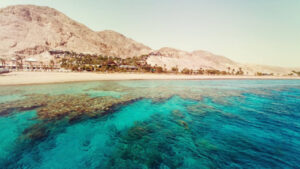We recently introduced you to the Natural Capital Valuation (NCV) Model – a new natural capital model that is being applied in various landscapes around the world.
In this article, we want to take you through some of the projects where the NCV Model is being applied and fill you in on how that work is going.
Understanding the collapse of the Aral Sea, Uzbekistan and Kazakhstan

The Aral Sea is a collapsed ecosystem. It stretches across the border of Kazakhstan to the north and Uzbekistan to the south, but it began shrinking in the 1960s and now exists as a series of separated high salinity water bodies. Historically, local communities have depended on fish as sources of food and income from the Sea, however no fish remain.
In situations like these, natural capital accounting and valuation can be used to:
- understand environmental change retrospectively
- consider future scenarios.
For example, it is possible for communities and ecosystems to adapt to new opportunities – like farming of brine shrimp, Artemia, in the Aral Sea.
Seeking investment opportunities in Sombor, Serbia
 The NCV Model has been applied to a landscape in Serbia in which a waste management project is being financed to understand where sustainable investment opportunities may exist.
The NCV Model has been applied to a landscape in Serbia in which a waste management project is being financed to understand where sustainable investment opportunities may exist.
This project demonstrates how understanding natural capital can help to build an understanding of project risks and to identify potential future investment opportunities, especially those relating to nature-based solutions. Waste management is a vital piece of the puzzle when applying nature-based solutions, especially when we consider efforts to move toward a circular economy.
Supporting sustainable tourism in the Red Sea, Egypt
 The NCV Model has been applied to a stretch of the Red Sea coastline in Egypt between Hurghada and Marsa Alam. This work focused on tourism as a driver of environmental change and is helping to pinpoint opportunities for sustainable tourism in the future.
The NCV Model has been applied to a stretch of the Red Sea coastline in Egypt between Hurghada and Marsa Alam. This work focused on tourism as a driver of environmental change and is helping to pinpoint opportunities for sustainable tourism in the future.
This project was the first application of the NCV Model in marine ecosystems. It picked up the importance of coral reefs, mangroves and seagrass meadows for the environment in this region.
The results from Egypt were then used to inform a high-level understanding of natural capital risks and opportunities across the entire Red Sea landscape. We’ll bring you more information about this project – including its relationship to sustainable tourism – in a future post.
Want to know more?
The NCV Model was developed for the European Bank for Reconstruction and Development (EBRD) in a collaborative project involving Arcadis, IDEEA Group, the Landscape Finance Lab and the RWA Group. It is underpinned by the System of Environmental Economic Accounting (SEEA) to support organisational decision-making.
Contact us if you’d like to learn more about how the model works and how it can be applied to the landscape level in your region.
